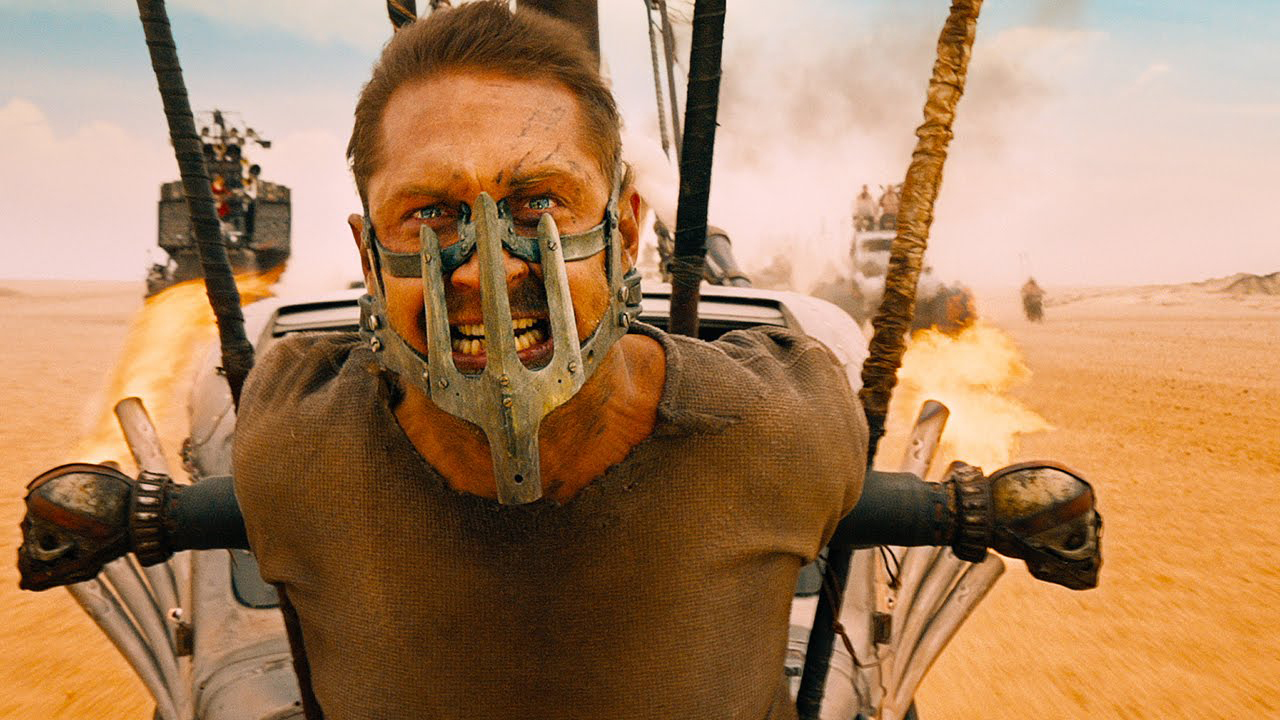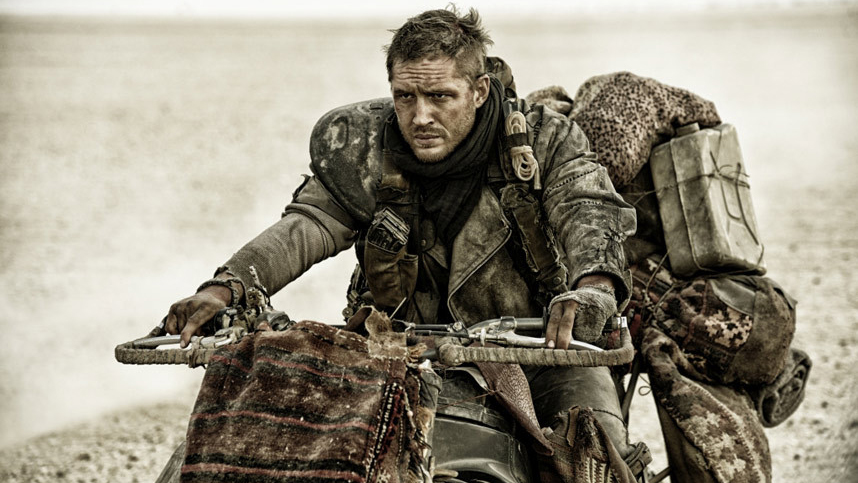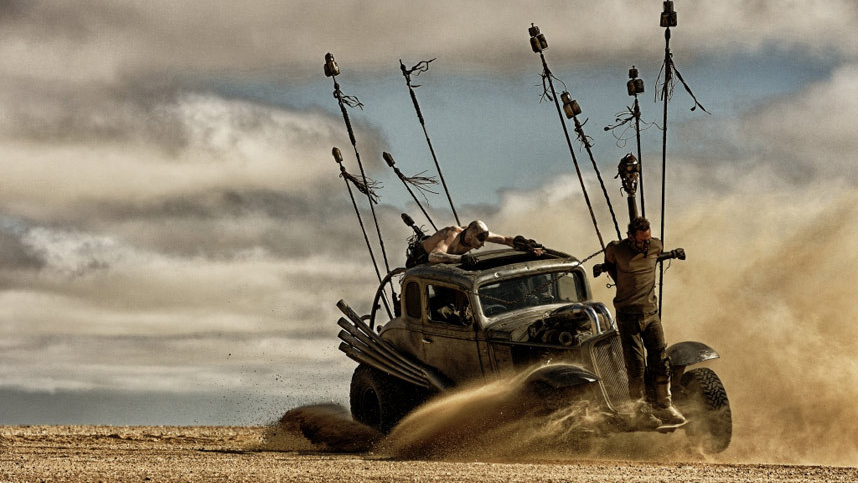7 tasty tech tricks used to create the world of Mad Max: Fury Road
Fury Road is out on Blu-ray now - we spoke to its director George Miller...


Mad Max
When George Miller announced he was updating the Mad Max world for modern-day cinemagoers, no one could have expected just how explosive Fury Road would be. The movie is, for the main, one big car chase filmed at break-neck speed. It's the most viscerally impressive film of the year and finally offers up a reason Max is, well, mad.
To celebrate the Blu-ray launch of the movie, T3 spoke to director George Miller about the technology he used to recreate the world and how he managed to film the myriad mad set pieces.

1. Fast and Furiosa
To make sure he got as close to the action as possible, George Miller created a special camera rig for the movie, something that wouldn't have looked out of place if it was in front of the camera and not just behind.
“We had a thing called the Edge Arm, which was basically a very sophisticated crane mounted on a vehicle, run by the 'three headed beasts', three men on toggle switches, one of them being a great stunt driver and it meant you could put that camera anywhere," said Miller.
“So I am sitting there as the director watching the screen in the middle of a fierce videogame, never dreaming we could do that. The Edge Arm was black, it was a very heroic-looking thing. Quite often it was in our shots, we left a couple of shadows in there just as a little homage to it.”

2. Game of drones
Because of insurance, Miller wasn't allowed to use drones while shooting the movie. But he did use the unmanned vehicles to enhance the movie for the better.
“When we were filming Mad Max out in the desert, we weren't allowed to use drones to film, because we weren't insured against them. It was illogical because if a drone drops out of the sky, it won't hurt many people as opposed to a helicopter. It didn't make sense," explained Miller.
“But we did use drones to photograph and map the landscape, so when we needed an extra bit of mountain, we could take the mountain we had and the time of day, the exact positioning with GPS and basically recreate that mountain digitally if we needed to. We could erase tire tracks and have pristine ground and the exact lighting.”

3. Calling the real shots
If the stunts in Mad Max: Fury Road weren't impressive enough, Miller decided to shoot them all in camera, using CG to compliment rather than overshadow the practical effects.
“We didn't use CG because we don't defy the laws of gravity [in the movie]. There's no flying people or space vehicles, no alien planets. This is a real world, it's crazy to do it CG when you can do it for real. You want the world to be authentic, to be immersive," explained Miller.
"If you see a car that you know is a CG car it seems a bit fake, I guess. It takes you out of it so we decided to go old school. But still using the agility of the digital cameras and still using CG to keep a consistent sky. The storm scene you couldn't do for real so that was CG and you could erase harnesses that keep the actors and the stunt crew safe, you can erase the evidence of previous takes with the tire marks and so on.”

4. Everything has a purpose
You may be wondering just how George Miller came up with the idea of the majestic modded cars found in the movie. It turns out that everything that is shown in the movie, from costumes to car, had to be able to be made from reclaimed objects that would be around after an apocalypse.
“Everything had to have a very rigorous logic. The film is very helter skelter, but there is this strong internal logic that underpins a film that is just chaotic and random," noted Miller. "Every design of wardrobe, weapons, cars, had to work to the same logic which is basically everything is repurposed, the cars that would survive an apocalypse are earlier technology, no microprocessors, no crumple technology, airbags. They are robust cars.”

5. Teslas and iPhones were not allowed
It turns out that in a Mad Max-style future, the most advanced technology we have today simply wouldn't survive. Miller believes that only the most robust machines would be in his world, which pretty much cancels anything out that uses electricity or a computer.
"The big problem with something like a Tesla is the computers would let them down, they had no way to repair the computers. So it was simpler technology," explained Miller. "For Max and Furiosa, each bullet is precious but for the Bullet Farmer he can use as much as possible so we go back to the Fossil Fuels rather than the Teslas. If the technology was robust enough, then maybe they might be there."

6. The times they keep a’changing
The first Mad Max was released in 1979, some 35 years before Fury Road. With this in mind, it turns out quite a lot has changed in the filmmaking process - including how we read a film.
“Moviemaking has changed in so many ways. The world has changed, cinema has changed, the way we read film has changed rapidly. It is an acquired language, it is not much more than a hundred years old and we are reading it faster and faster," said Miller. "Mad Max 2 had 1,200 shots, this has closer to 3,000. Jurassic Park, I was told, had 950 shots and the latest one probably has three times as many. So we are reading faster and faster.”

7. Mad Max doesn’t need to be seen on the big screen
While most directors would feel nauseous at the mere thought of people watching their movie on a phone, Miller doesn't mind. But if you want the best experience, watch it on the biggest screen as possible.
“Obviously the optimum version of the movie would be IMAX with Atmos sound in stereo 3D, as we were very meticulous about the stereo conversion. Having said that, if a story works I find I can watch it on my iPhone and still get something out of it," said Miller.
"I would prefer if people didn't watch the movie on a phone but if they want to watch it that way, the essence of the story comes through, the immersive experience is not there, neither is all the technical effort, it's kind of a waste but the essential story is there. It's like listening to a great piece of music, you don't need great speakers but it would be good to have them to get the full experience but, hey.”
Get all the latest news, reviews, deals and buying guides on gorgeous tech, home and active products from the T3 experts